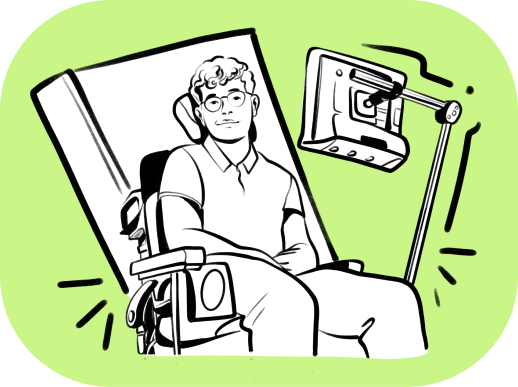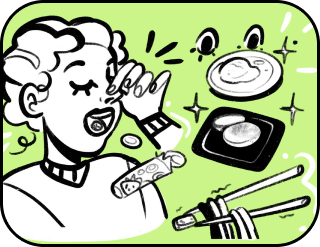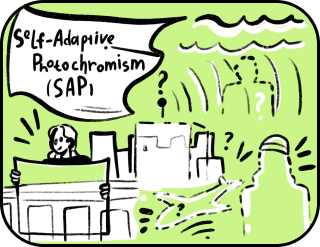How to find a writer’s code: eyegaze technology for aspiring writers
Note. The editorial team of The Global Technology magazine strongly believes that an author truly becomes one in the moment of interaction with their readers: when their texts inspire, assist in living, and spur the creation of new achievements. All texts for the magazine are handwritten by authors without the use of artificial intelligence. This is the editorial principle that will remain unchanged.
«What makes someone a writer?» – the question was posed among budding talents, «Is it the process of writing?»
The asker, aspiring writer John, struggles to define his style, format, and topic because he simply loves writing and believes he’s reasonably good at it.
«Every time you write, you are a writer. Every time you play the violin, you are a musician. Every time you start training, you are an athlete,» replied his colleague James Clear, author of «Atomic Habits.»
Agata, the head of the Writers’ Society, senior comrade, and creative director, seized upon the thought and suggested expanding on this theme:
«Writing, like everything else, is like a muscle that can be incorporated into habitual processes. Essentially, it’s just a way to share thoughts. Most people don’t realize that often the difficulty lies not in the act of writing itself but in the contemplation that precedes it.»
A good topic for discussion and an excellent challenge. Writing texts — it’s not as difficult as tallying debits and credits in accounting, solving mathematical equations, or delving into quantum physics, after all.
Let’s think: is writing really that simple? How and with what will we write? Two types of solutions come into play: practical and technological. Which solution will prevail?
It’s easy to perform habitual actions when everything necessary is at hand: a healthy body, clear coordination of movements, necessary tools, and skills. So what is needed to write a masterpiece?
«A snap — and it’s done,» you might say. Well, maybe a couple of snaps.
You might also need a pen, an antique inkwell, and creative inspiration. A typewriter with elegant keys, a cup of coffee, and inspiration. Modern equipment like the latest laptop with a comfortable keyboard and specialized software.
Fingers flutter over keys, and ideas are born directly on the monitor. Beautiful! Plus, of course, experiments with various functions, programs, interactive elements, and multimedia inserts. Then the stories become even more captivating.
Why not write a book on sand, on the facade of a white house, or on a high cliff? Then the book will be seen and read in a hundred years. The main thing is that there is meaning. And in the case of sand, the process itself would be enjoyable.
You don’t even have to write a book. You can assemble it from individual parts or pictures. Have you considered a book as an art object?
For example, Codex Seraphinianus — a unique and enigmatic specimen created by Italian artist and designer Luigi Serafini.
This book is more than just a literary work — it’s a real immersion into a surrealist world. Its main feature is an unknown language that structurally and symbolically resembles various natural languages but remains undecipherable. Its pages are adorned with whimsical illustrations that depict an alternative reality with its own laws and rules. It’s not just a puzzle book that inspires artists and writers; it’s a mysterious and unique artifact.
The times of Shakespeare, when «golden content of books only needed golden locks» have long passed. Back then, books were adorned with everything imaginable, but today, one must showcase creativity to attract attention.
Renowned Japanese author Koji Suzuki, writer of «The Ring» series, surprised fans with a new horror story titled «Drop.» The story was printed not on ordinary paper but on toilet paper.
One might wonder, the holder of the prestigious «Japan Fantasy Novel Award» and toilet paper. The fact is, the work itself was quite short — it could be read in a few minutes. Therefore, to ensure no detail was missed, the text was repeated several times on each sheet. Literary experts probably don’t even need to read it; the mere existence of such an idea already resembles a horror movie plot. Undoubtedly, this performance has caused a stir, and thus, interest.
Modern designers have set out to increase the readability level, issuing a limited edition of Ray Bradbury’s «Fahrenheit 451.» The pages of this book feature a special heat-resistant black coating, and to read the text, you need to hold a lighter near it, only then will it appear! Such a performance wasn’t accidental either, as the protagonist of the book, Guy Montag, was a firefighter who burned those very books.
It doesn’t matter what is written; what matters is that it burns! Wow…
And that’s not all! The book cover can serve as a matchbox container, and the spine can simulate the side of a matchbox. By striking it, you can light a match and… burn the book itself! A real interactive experience for fans of dystopias and fire. Imagine: you slowly burn the book while it reveals its secrets to you. Simply incredible!
Pen, pencil, keyboard, inspiration… it’s time for creativity, hype, and provocations, not just content.

What about those for whom content is important and those who want to entrust all their feelings to paper but have no opportunity to do so?
People who suffer from poliomyelitis can feel but are unable to write. A person who is paralyzed also wants to communicate with the world through texts, but is such a thing even possible?
Often, hope abandons us or we abandon it. And only faith brings us back to the path we fear, giving us strength and chances for success, and high results. Thanks to it, new inventions are born.
Here he is — the person whose eyes have become the only connecting link with the surrounding world. Howard Wicks, a man from England who lost the ability to move and speak, but did not lose his thirst for knowledge and life. He discovered new computer equipment — his eyes — and literally opened up a whole new world of possibilities for himself. Being paralyzed, he managed to become a writer and publish a book about his experience.
It’s all about Eyegaze — a special device that tracks eye movements and records them as text. With this device, one can maintain contact with the outside world and feel alive.
Fully paralyzed Howard, with only his eyes mobile, wrote an entire trilogy about the challenging path of life and everything he wanted to share for years but couldn’t, due to his limitations.
His eyes became his window into the boundless ocean of knowledge and creativity, and in tandem with technology, the dream of an ordinary person to become an author came true.
Instead of painfully moving a cursor across the monitor screen, you can simply think about the words, and they will sound! It’s like telekinesis but for speech.
By the way, scientists from California have created a real miracle — a device that literally reads thoughts and translates them into sounds. Yes, this project is designed for people with limited capabilities, and now even those who cannot move their mouths can communicate, share their thoughts, and feelings. It’s a real breakthrough that gives hope to millions of people worldwide!
By uniting technologies and human abilities into one team, a literary alliance can indeed be formed.
And the one who will be read becomes the author. And read with interest.

The cell divides into the nucleus and cytoplasm. Our journal divides into interesting facts and discoveries.
Thank you!




